Sustainable Development Goals
 |
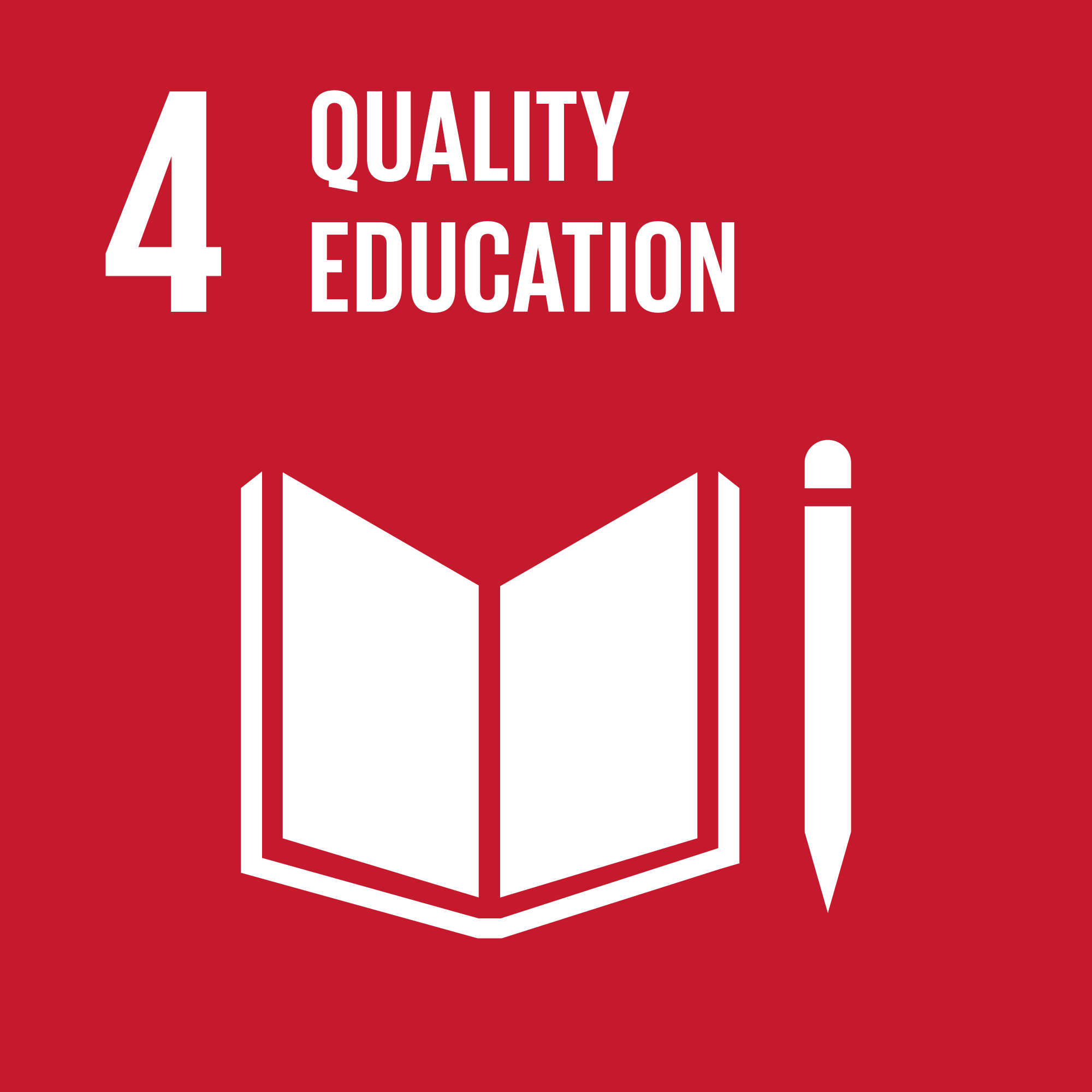 |
 |
 |
|
|
|
|
|
-
Target 4.7 | Education for Sustainable Development and Global Citizenship
|
|
|
|
|
|
|
|
|
|
|
Targets and Indicators with Data Availability
Note: The data may be updated periodically as more information become available.
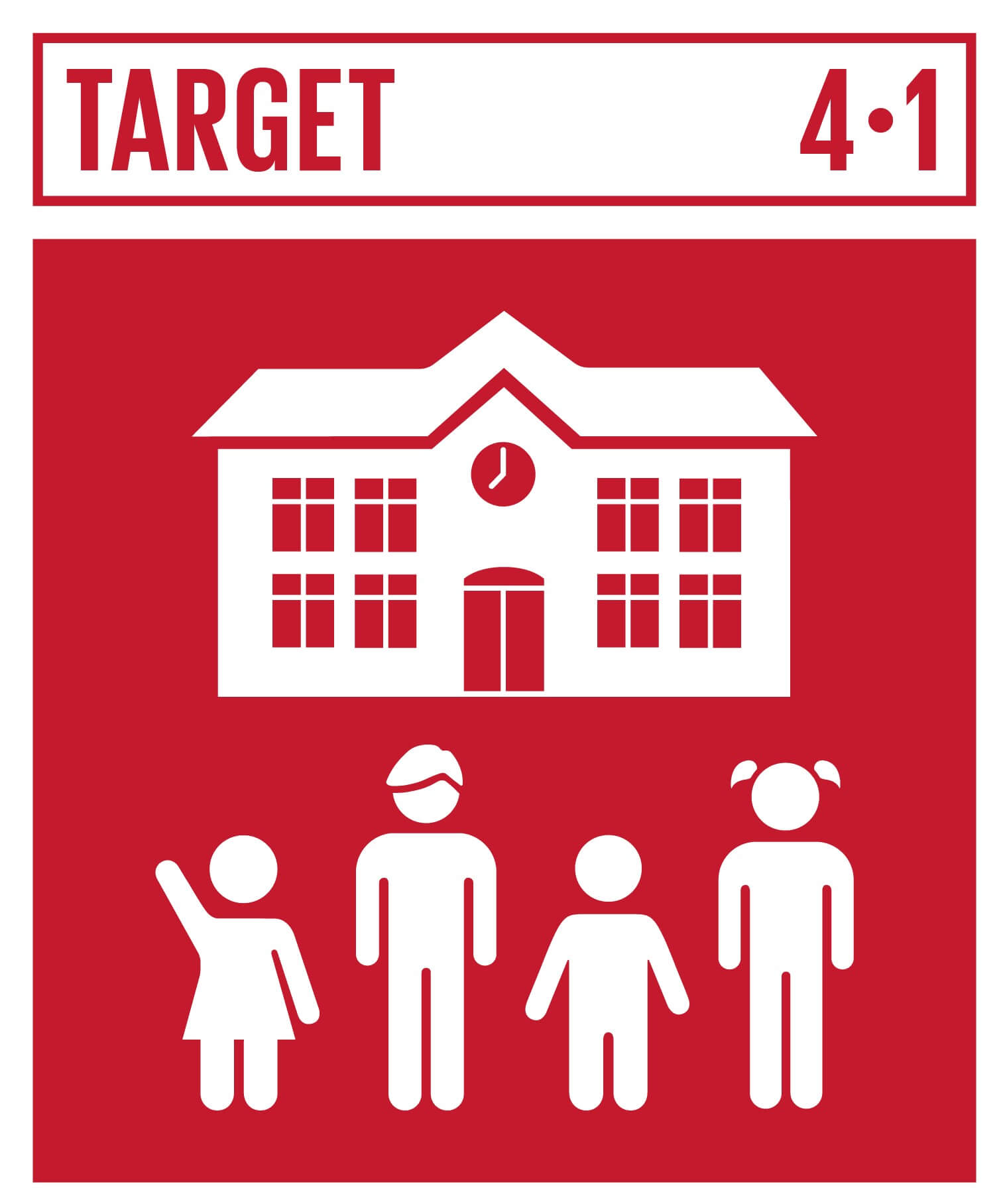 |
Free Primary and Secondary Education
By 2030, ensure that all girls and boys complete free, equitable and quality primary and secondary education leading to relevant and effective learning outcomes.
|
Indicator 4.1.1 | Proportion of children and young people (a) in grades 2/3; (b) at the end of primary; and (c) at the end of lower secondary achieving at least a minimum proficiency level in (i) reading and (ii) mathematics, by sex
|
(bi)
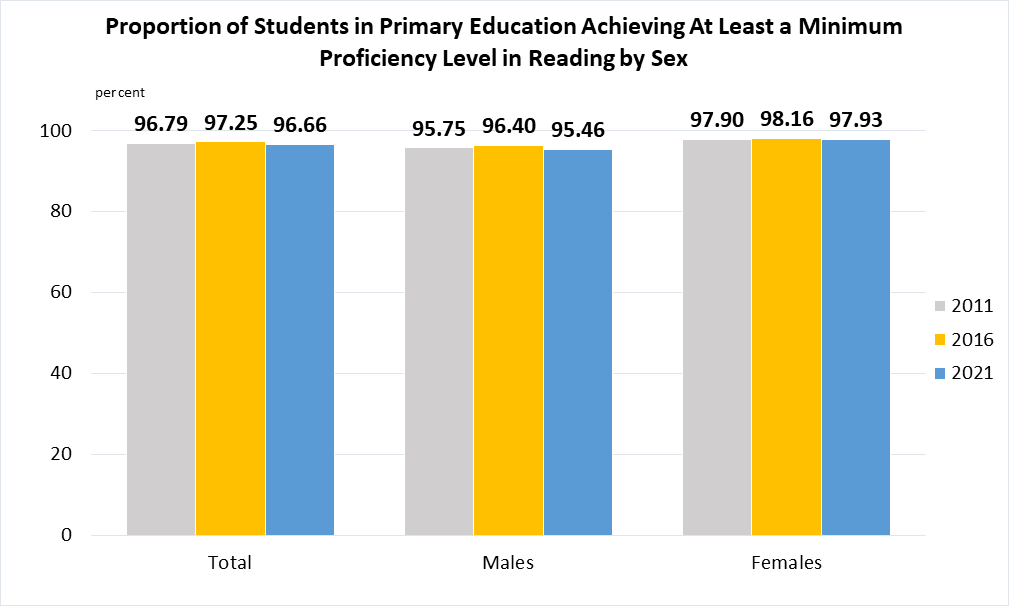
Data are taken from Progress in International Reading Literacy Study (PIRLS) for Grade 4 or Primary 4 students.
(bii)
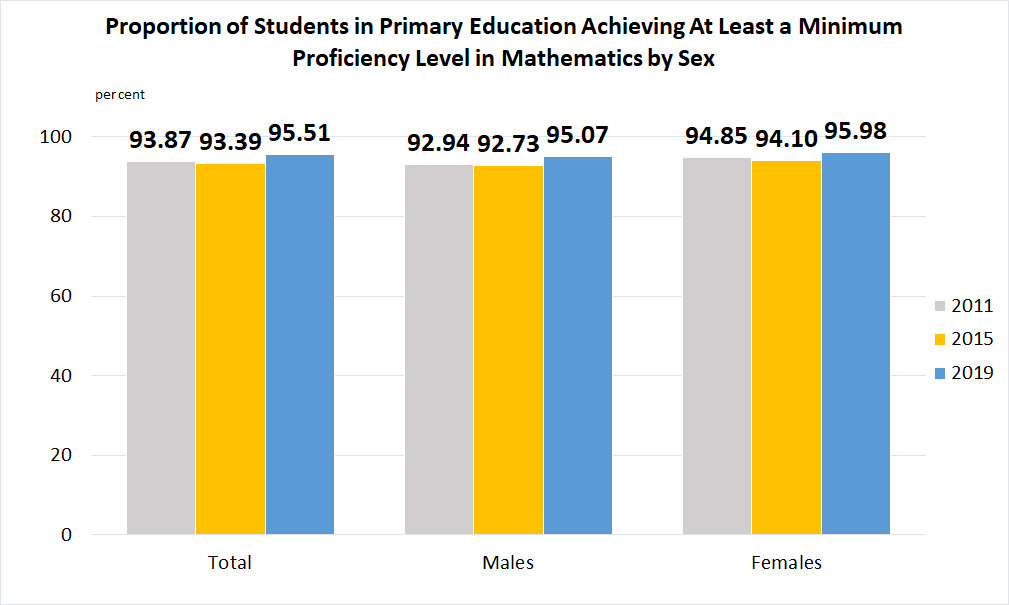
Data are taken from Trends in International Mathematics and Science Study (TIMSS) for Grade 4 or Primary 4 students.
(ci)
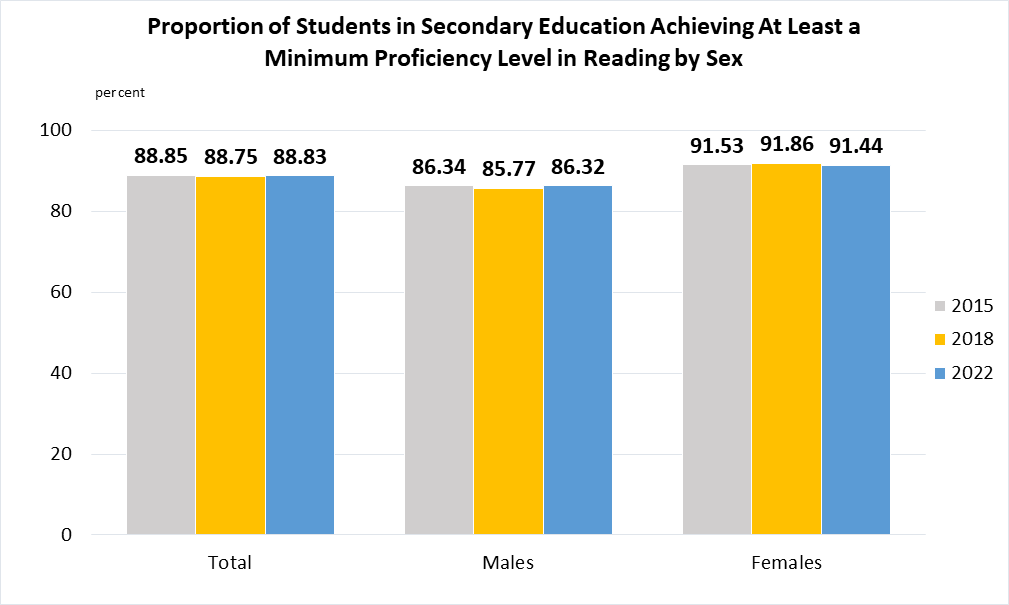
Data are taken from the Programme for International Student Assessment (PISA), targeting 15-year-olds.
(cii)
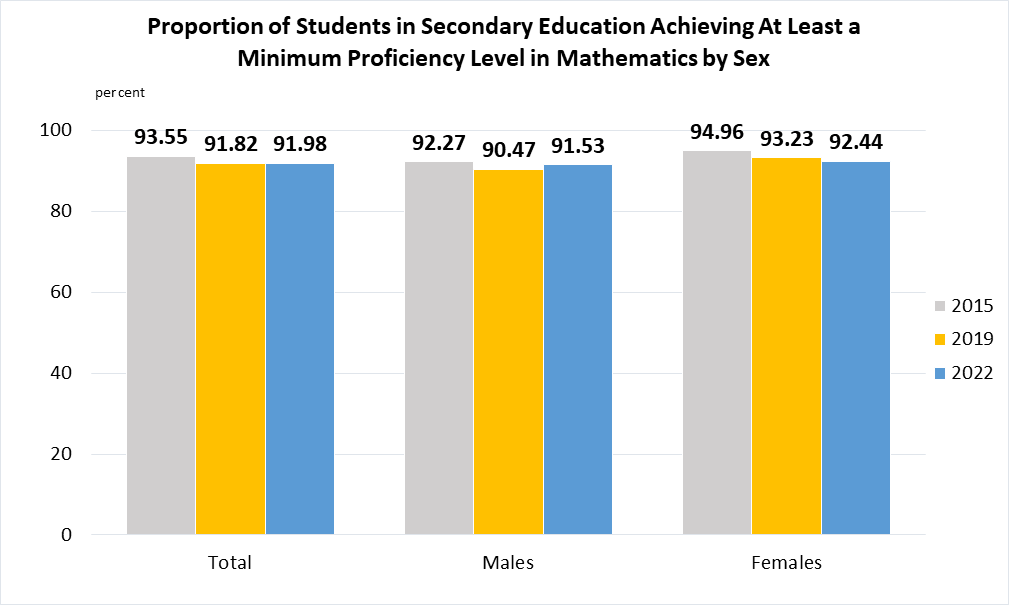
Data are taken from Trends in International Mathematics and Science Study (TIMSS) for Grade 8 or Secondary 2 students.
|
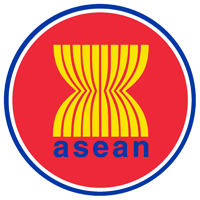 |
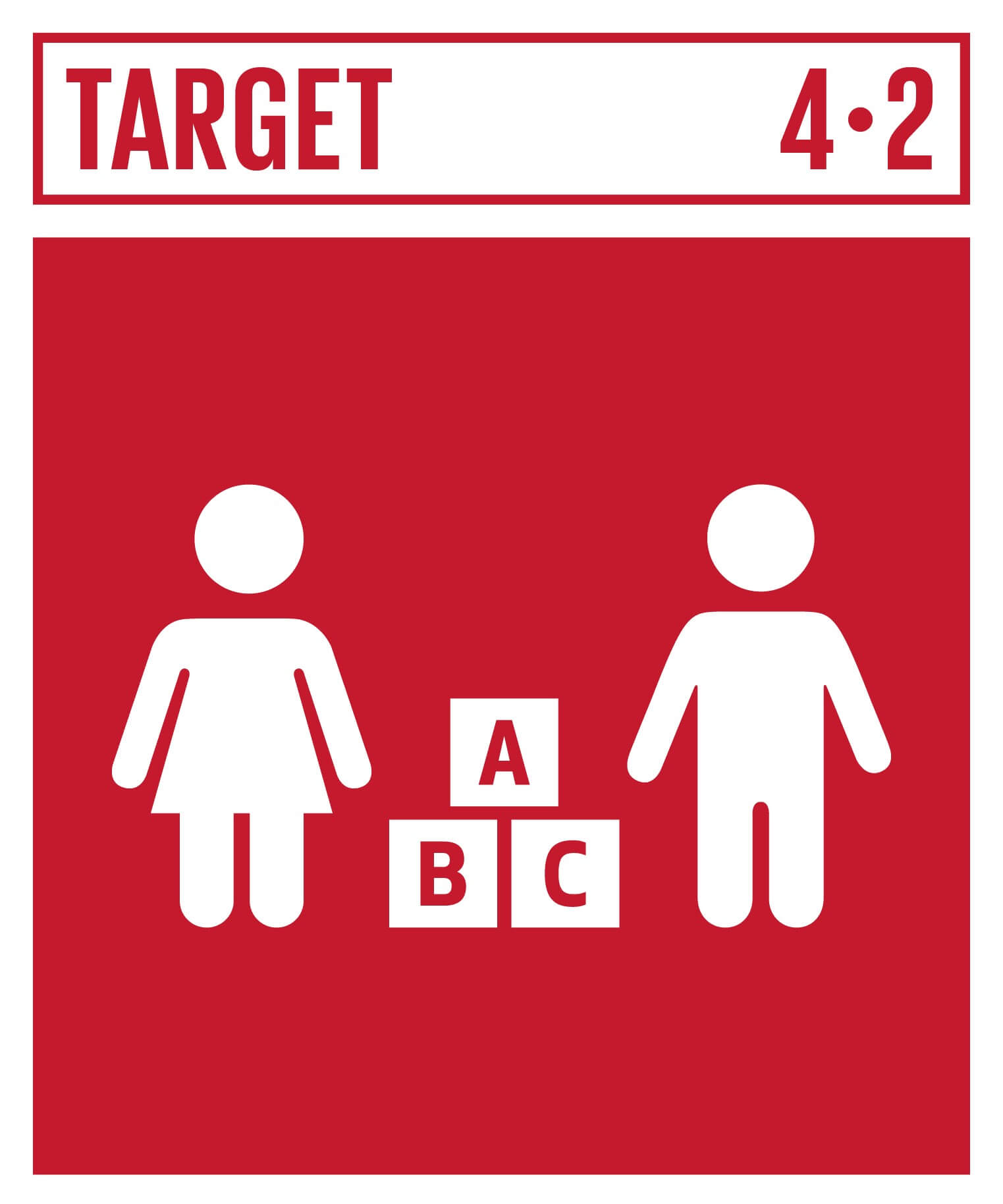 |
Equal Access to Quality Pre-Primary Education
By 2030, ensure that all girls and boys have access to quality early childhood development, care and pre-primary education so that they are ready for primary education.
|
Indicator 4.2.2 | Participation rate in organized learning (one year before the official primary entry age), by sex
|
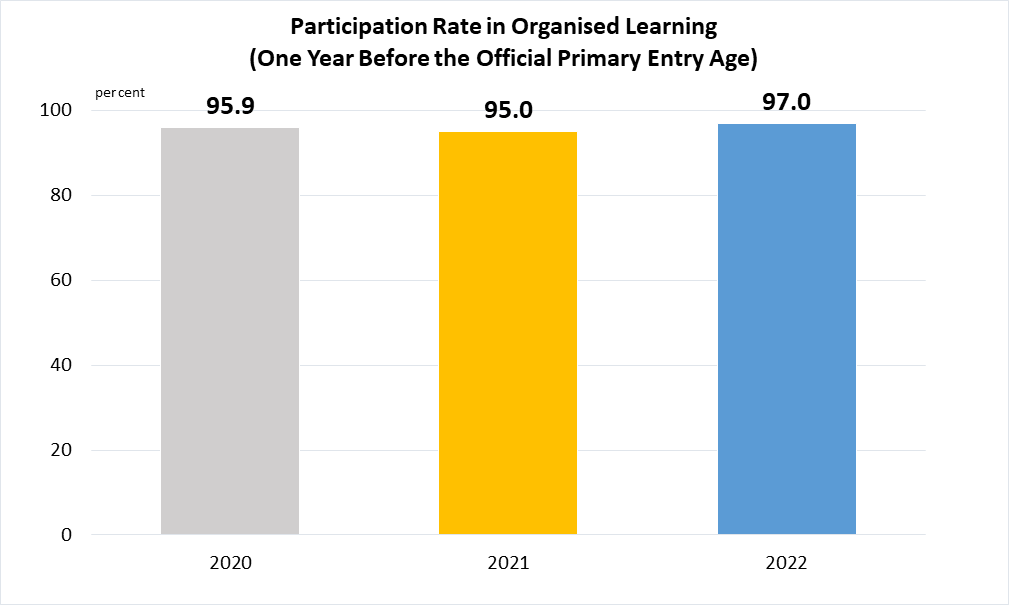
Data refer to Singapore citizen children only.
|
 |
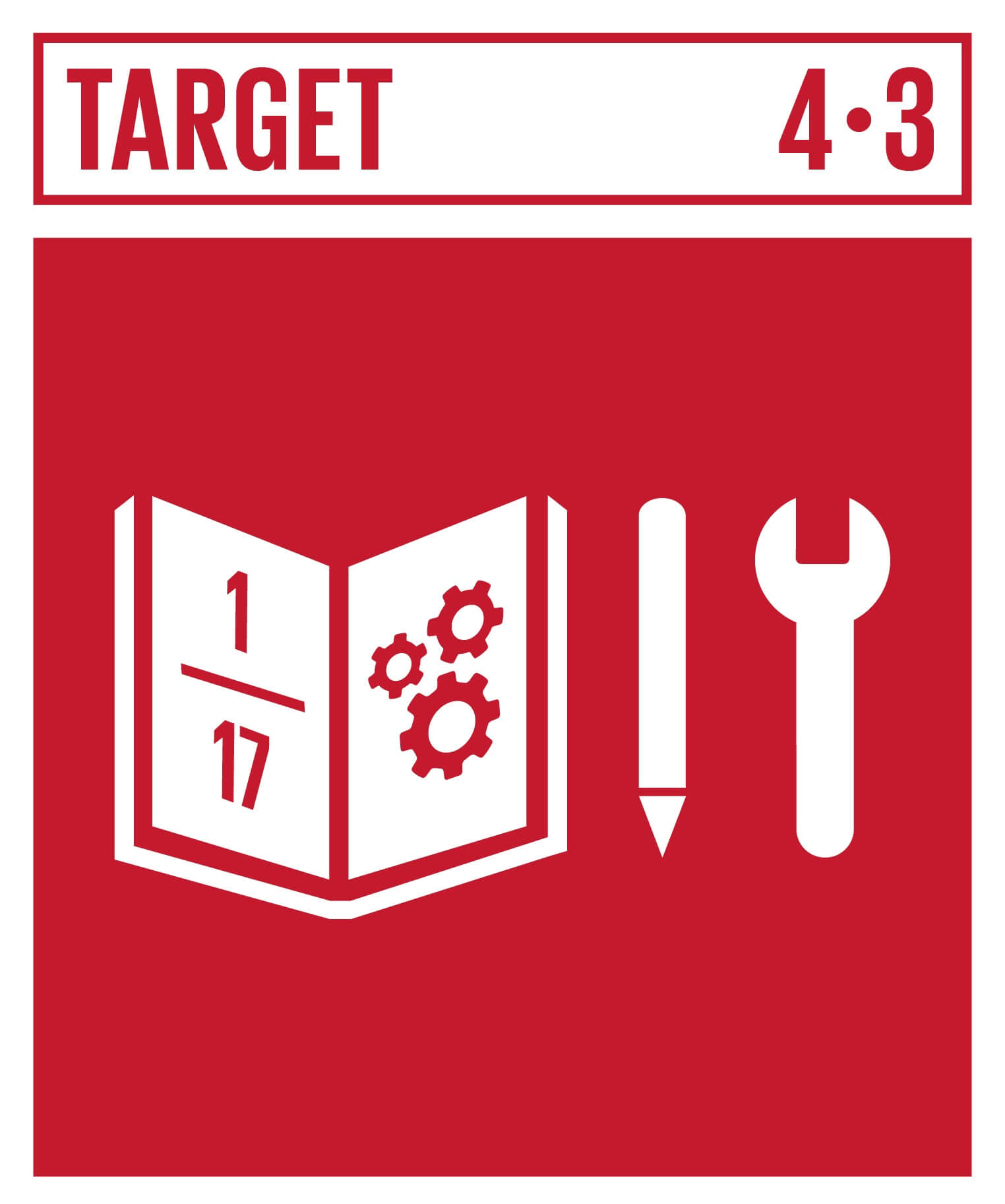 |
Equal Access to Affordable Technical, Vocational and Higher Education
By 2030, ensure equal access for all women and men to affordable and quality technical, vocational and tertiary education, including university.
|
Indicator 4.3.1 | Participation rate of youth and adults in formal and non-formal education and training in the previous 12 months, by sex
|
(a)
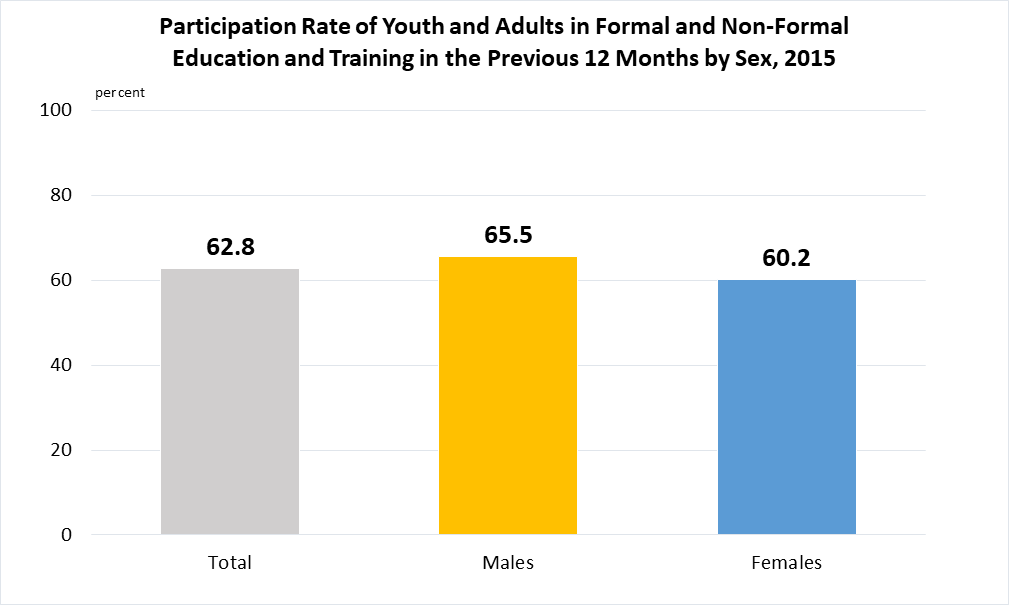
Data are taken from Programme for the International Assessment of Adult Competencies (PIAAC), targeting adults aged 16 - 65.
Please note that this includes students in their regular cycle of studies.
Note: Data are only available for 2015.
(b)
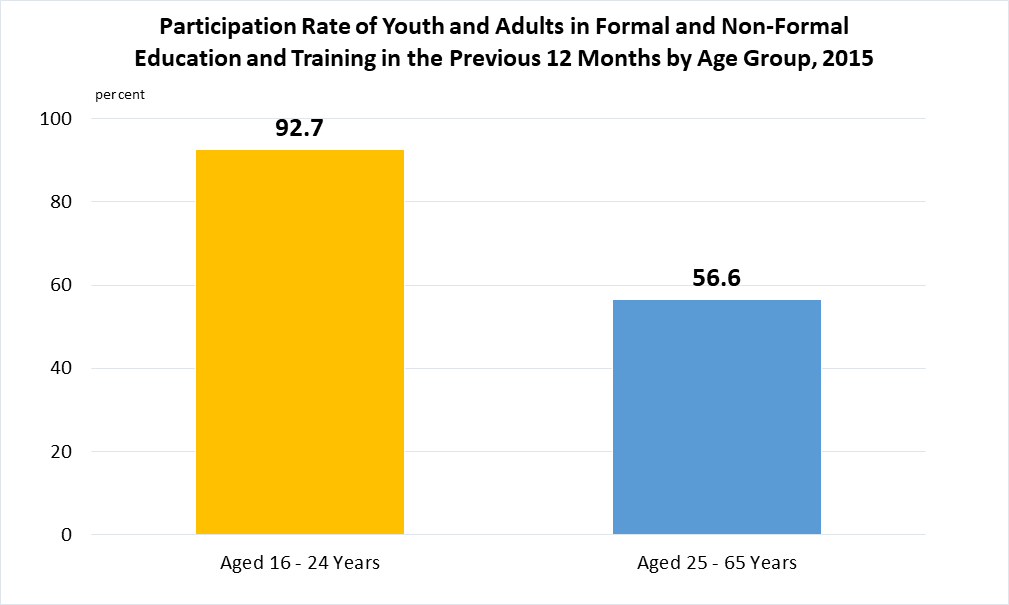
Data are taken from Programme for the International Assessment of Adult Competencies (PIAAC), targeting adults aged 16 - 65.
Please note that this includes students in their regular cycle of studies.
Note: Data are only available for 2015.
|
|
 |
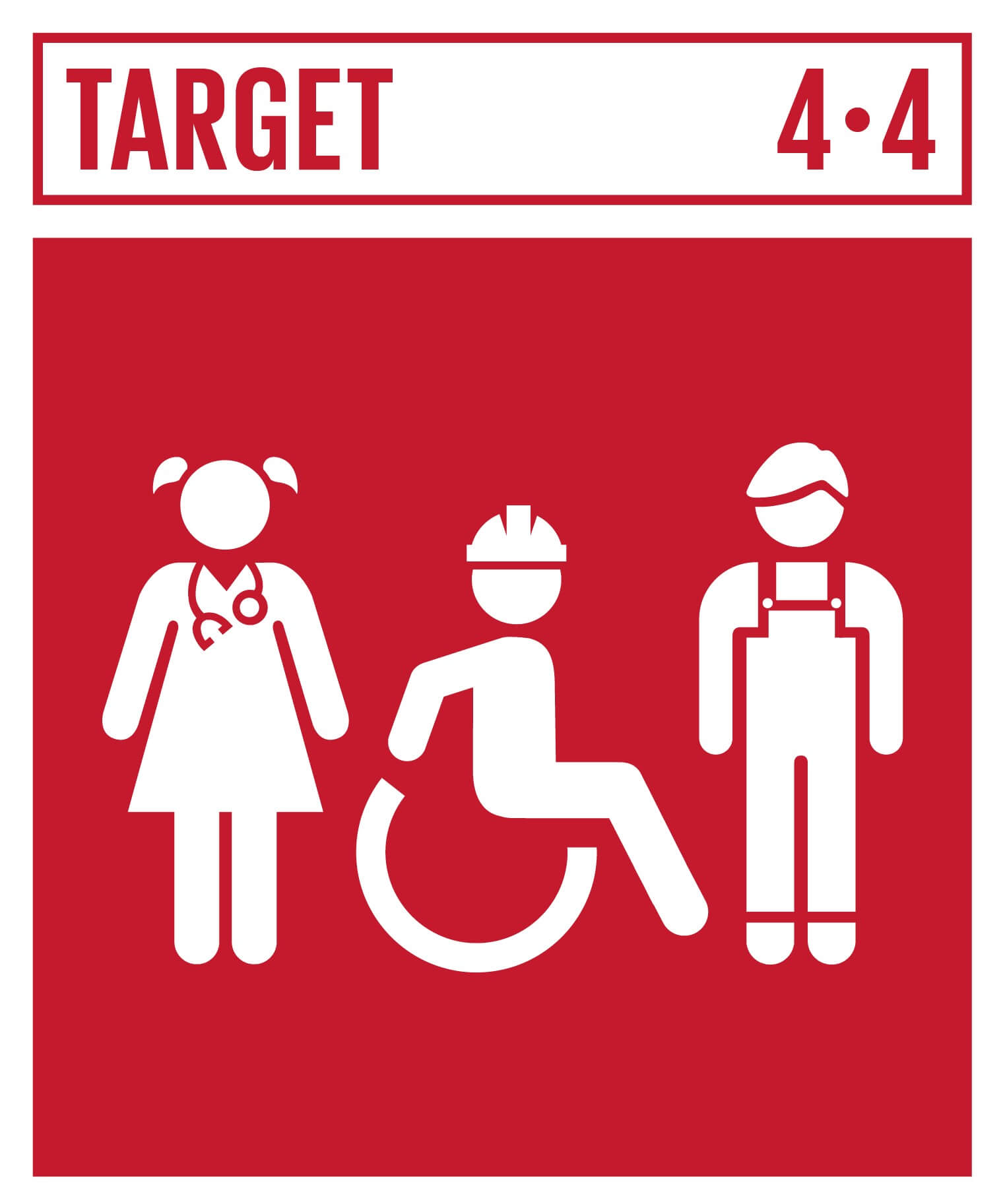 |
Increase the Number of People with Relevant Skills for Financial Success
By 2030, substantially increase the number of youth and adults who have relevant skills, including technical and vocational skills, for employment, decent jobs and entrepreneurship.
|
Indicator 4.4.1 | Proportion of youth and adults with information and communications technology (ICT) skills, by type of skill
|
(a)
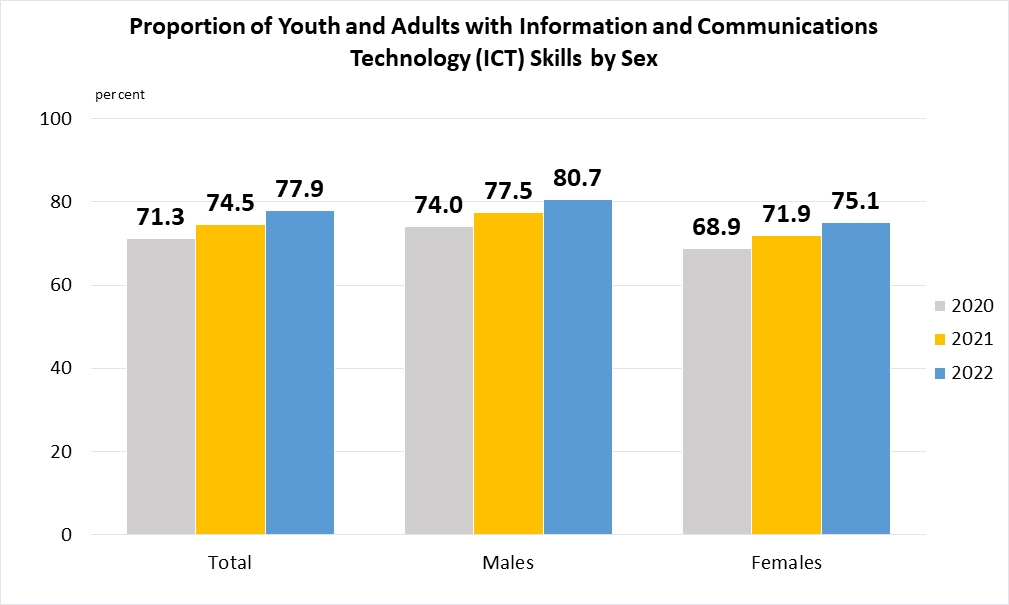
Data refer to Singapore residents (i.e. Singapore citizens and permanent residents) aged 15 and above.
(b)
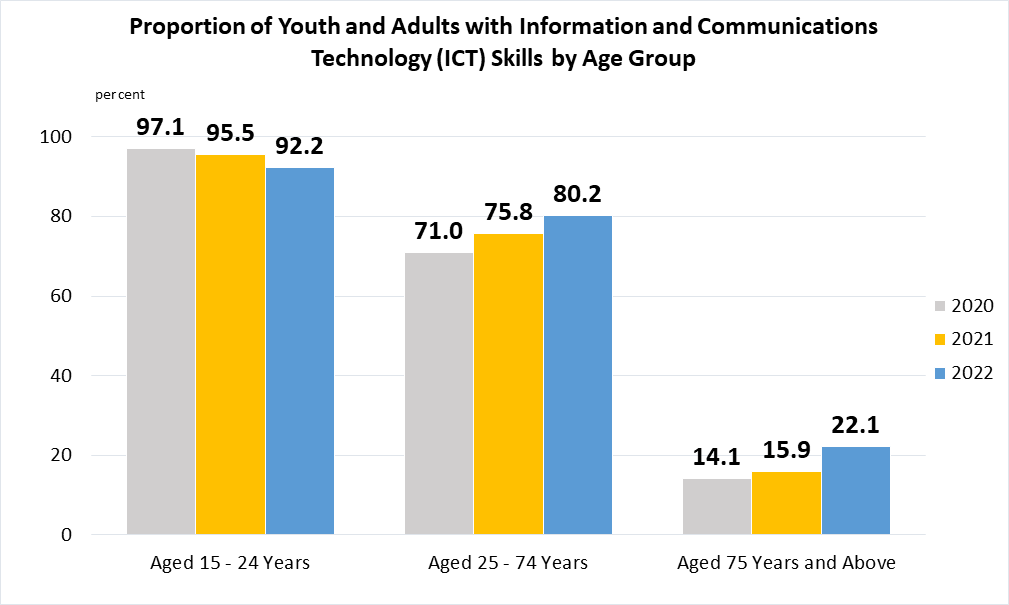
Data refer to Singapore residents (i.e. Singapore citizens and permanent residents).
Proportion of Youth and Adults with Information and Communications
Technology (ICT) Skills, by Type of Skill
| Per Cent |
| Year |
2020 |
2021 |
2022 |
|
Using copy and paste tools to duplicate or move data, information and content in digital environments (e.g., within a document, between devices, on the cloud)
|
NA
|
NA
|
51.1
|
|
Sending messages (e.g., e-mail, messaging service, SMS) with attached files (e.g., document, picture, video)
|
NA
|
NA
|
71.8
|
|
Using basic arithmetic formulae in a spreadsheet
|
44.6
|
38.6
|
33.7
|
|
Connecting and installing new devices (e.g., modem, camera, printer)
|
38.2
|
34.3
|
26.3
|
|
Finding, downloading, installing and configuring software (includes downloading of apps, images, videos)
|
55.1
|
57.5
|
52.4
|
|
Creating electronic presentations with presentation software (including text, images, sound, video or charts)
|
42.1
|
40.0
|
34.6
|
|
Transferring files between a computer and other devices
|
51.6
|
53.1
|
49.3
|
|
Writing a computer program using a specialised programming language
|
9.3
|
10.0
|
5.8
|
|
Changing privacy settings on your device, account or app to limit the sharing of personal data and information (e.g. name, contact information, photos)
|
NA
|
70.2
|
72.5
|
|
Setting up effective security measures (e.g. strong passwords, log-in attempt notification) to protect devices and online accounts
|
NA
|
74.0
|
75.4
|
|
Verifying the reliability of information found online
|
NA
|
77.6
|
82.5
|
|
|
 |
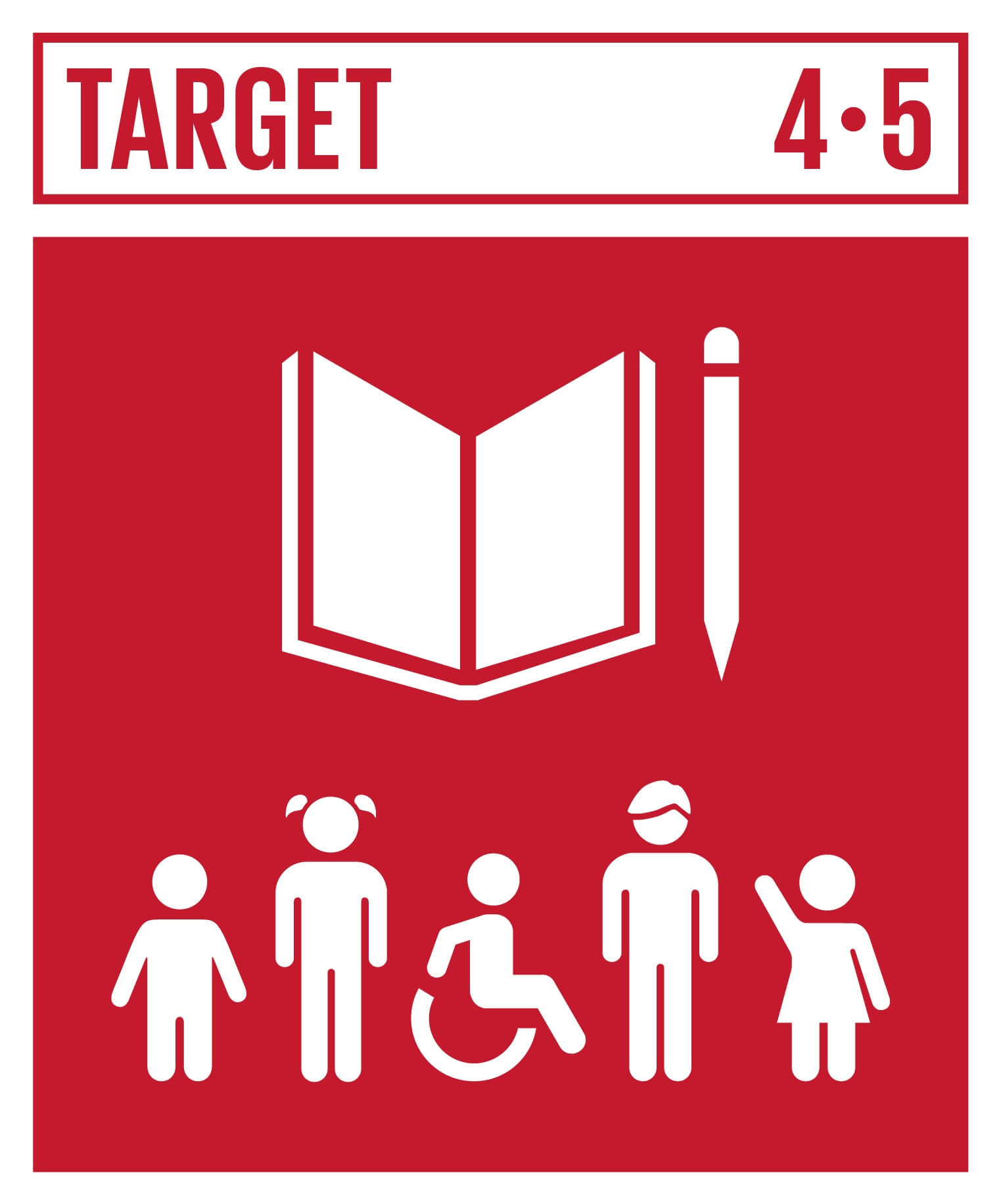 |
Eliminate All Discrimination in Education
By 2030, eliminate gender disparities in education and ensure equal access to all levels of education and vocational training for the vulnerable, including persons with disabilities, indigenous peoples and children in vulnerable situations.
|
Indicator 4.5.1 | Parity Indices (female/male, rural/urban, bottom/top wealth quintile and others such as disability status, indigenous peoples and conflict-affected, as data become available) for all education indicators on this list that can be disaggregated
|
(a)
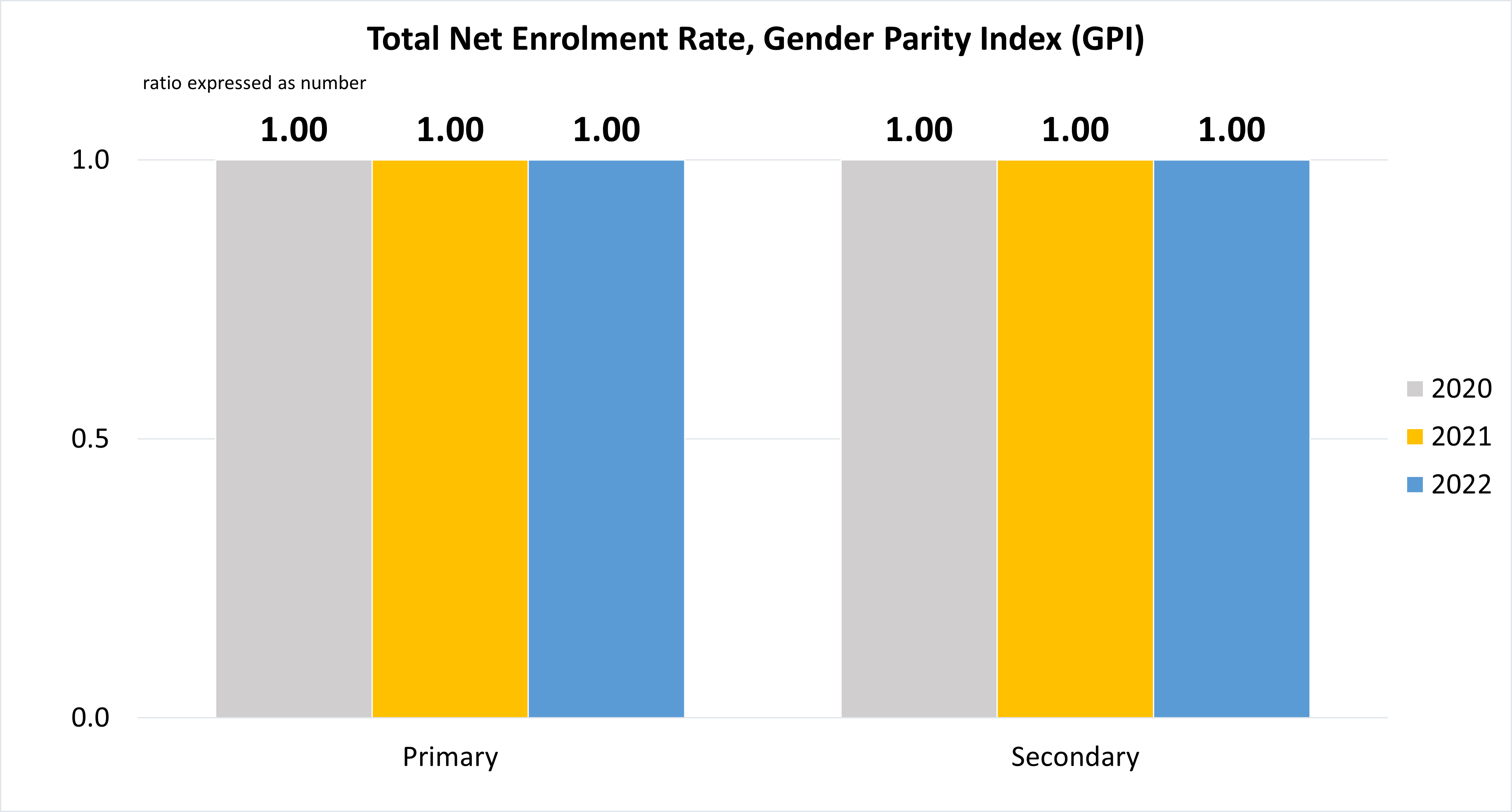
Singapore does not compute total net enrolment rate for Tertiary as the age range of tertiary students varies widely.
(b)
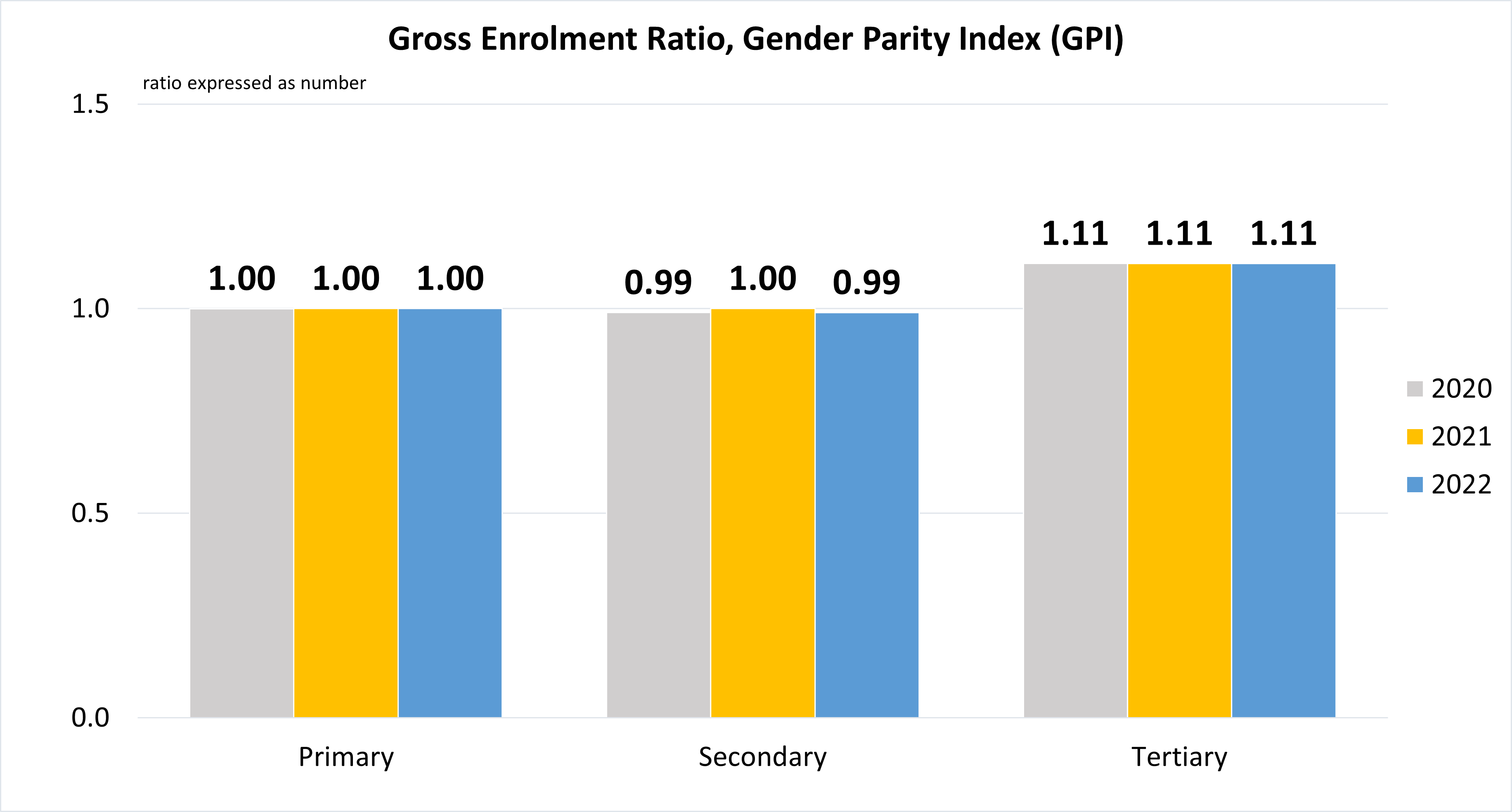
|
 |
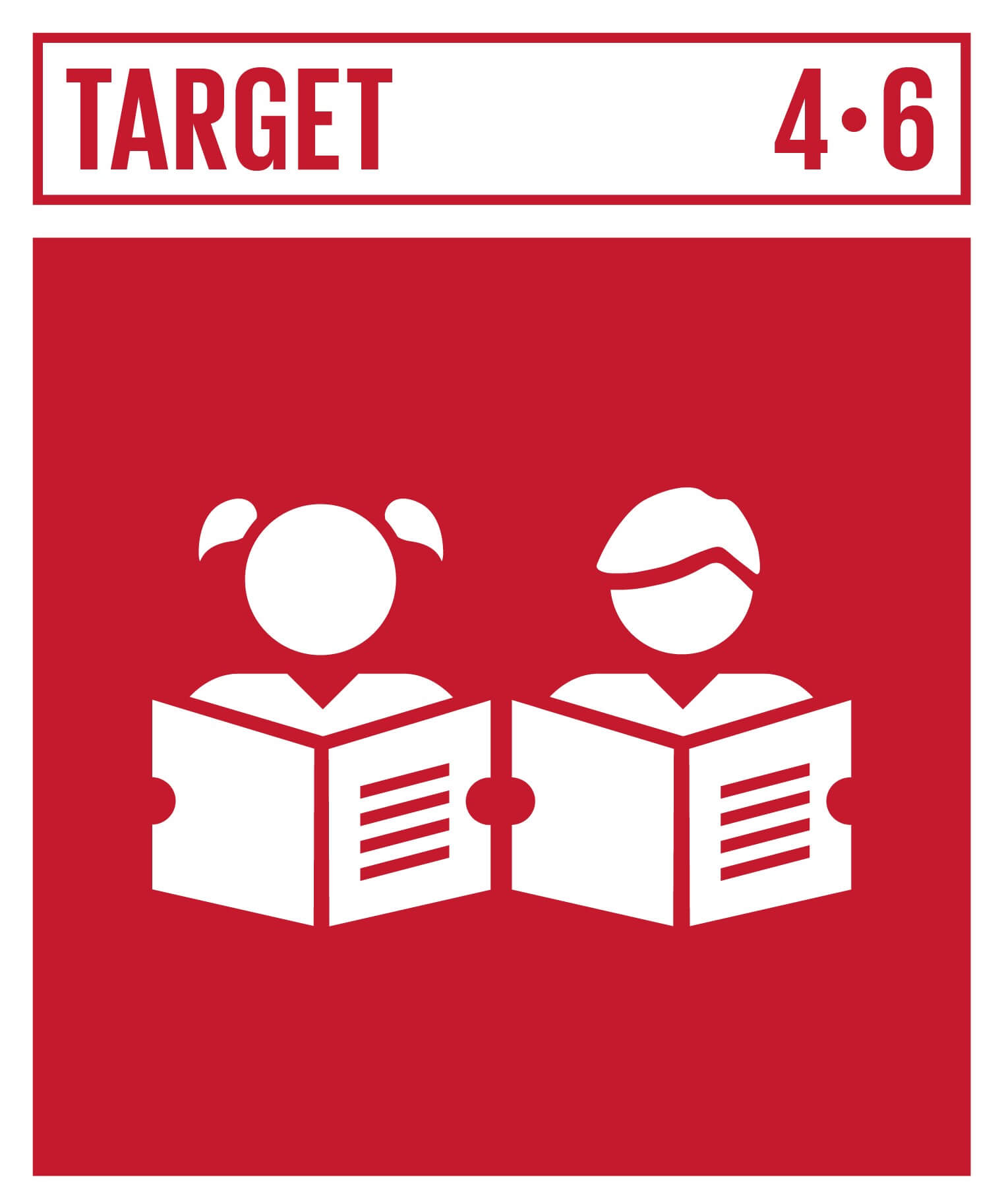 |
Universal Literacy and Numeracy
By 2030, ensure that all youth and a substantial proportion of adults, both men and women, achieve literacy and numeracy.
|
Indicator 4.6.1 | Proportion of population in a given age group achieving at least a fixed level of proficiency in functional (a) literacy and (b) numeracy skills, by sex
|
(ai)
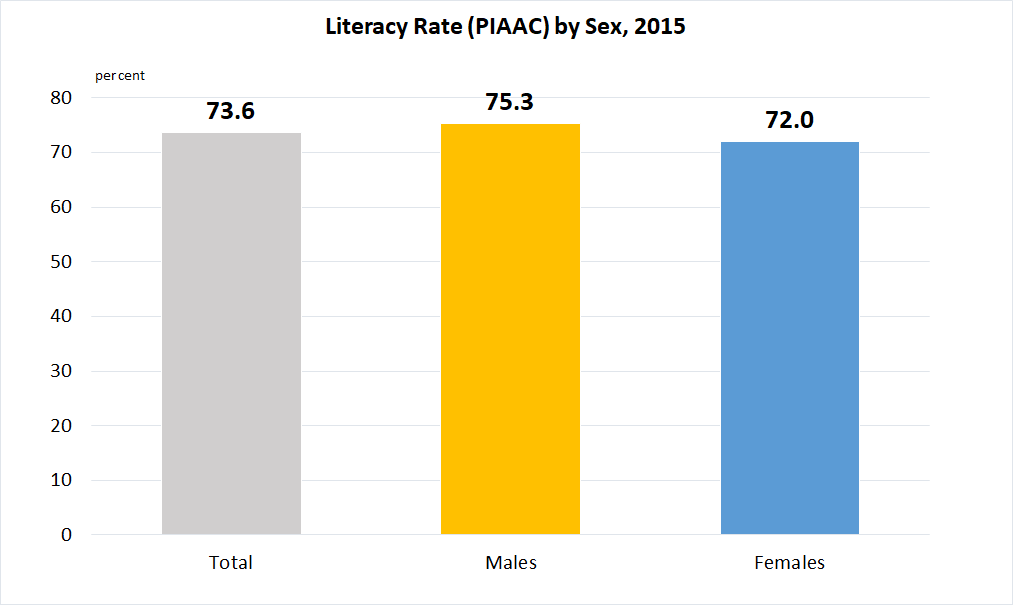
Data are taken from Programme for the International Assessment of Adult Competencies (PIAAC), targeting adults aged 16 - 65.
Note: Data are only available for 2015.
(aii)
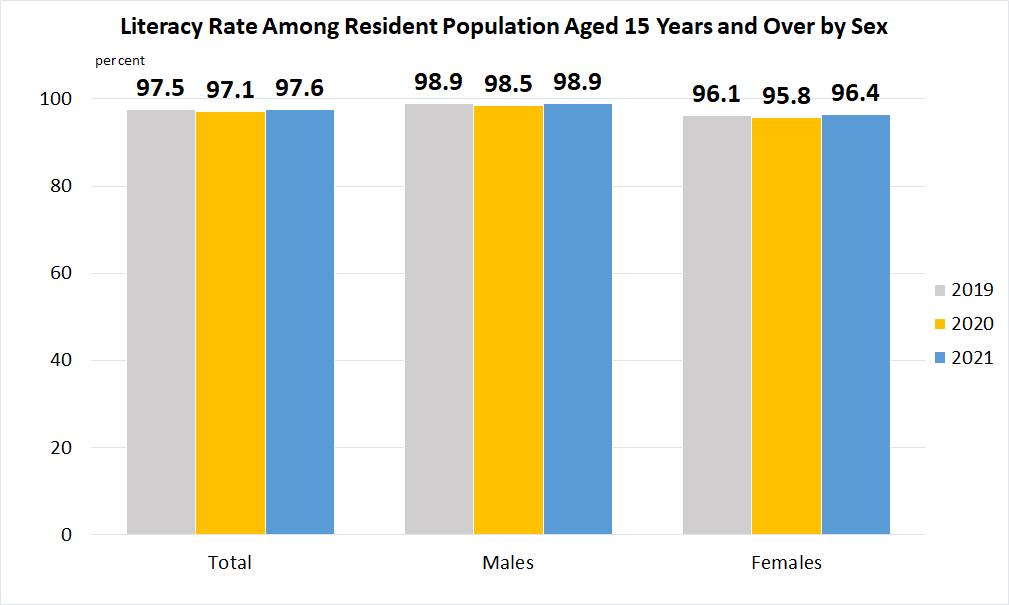
Data refer to Singapore residents (i.e. Singapore citizens and permanent residents) and are derived based on information as reported in household surveys as well as administrative data.
(b)
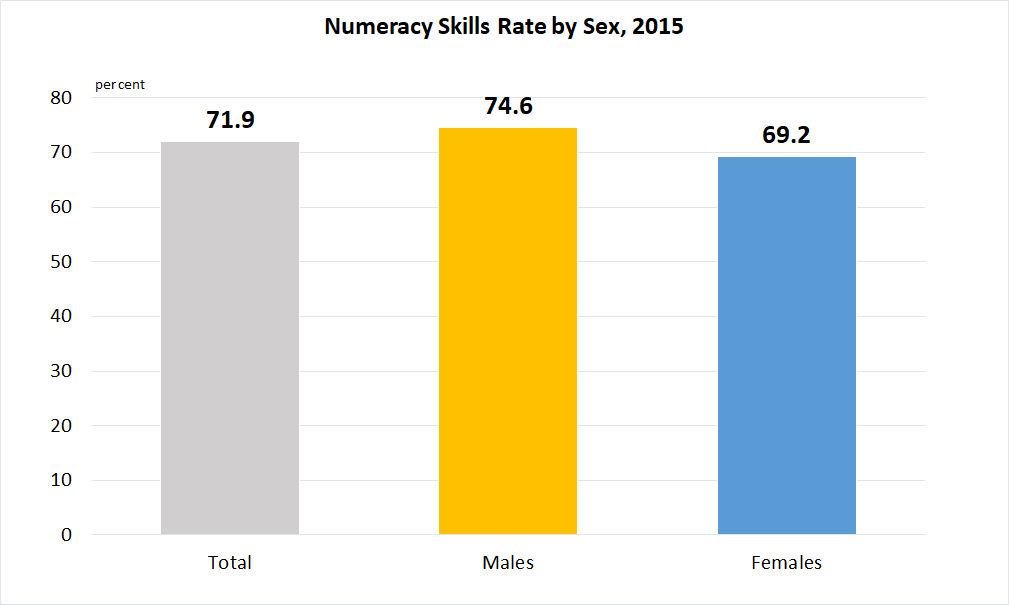
Data are taken from Programme for the International Assessment of Adult Competencies (PIAAC), targeting adults aged 16 - 65.
Note: Data are only available for 2015.
|
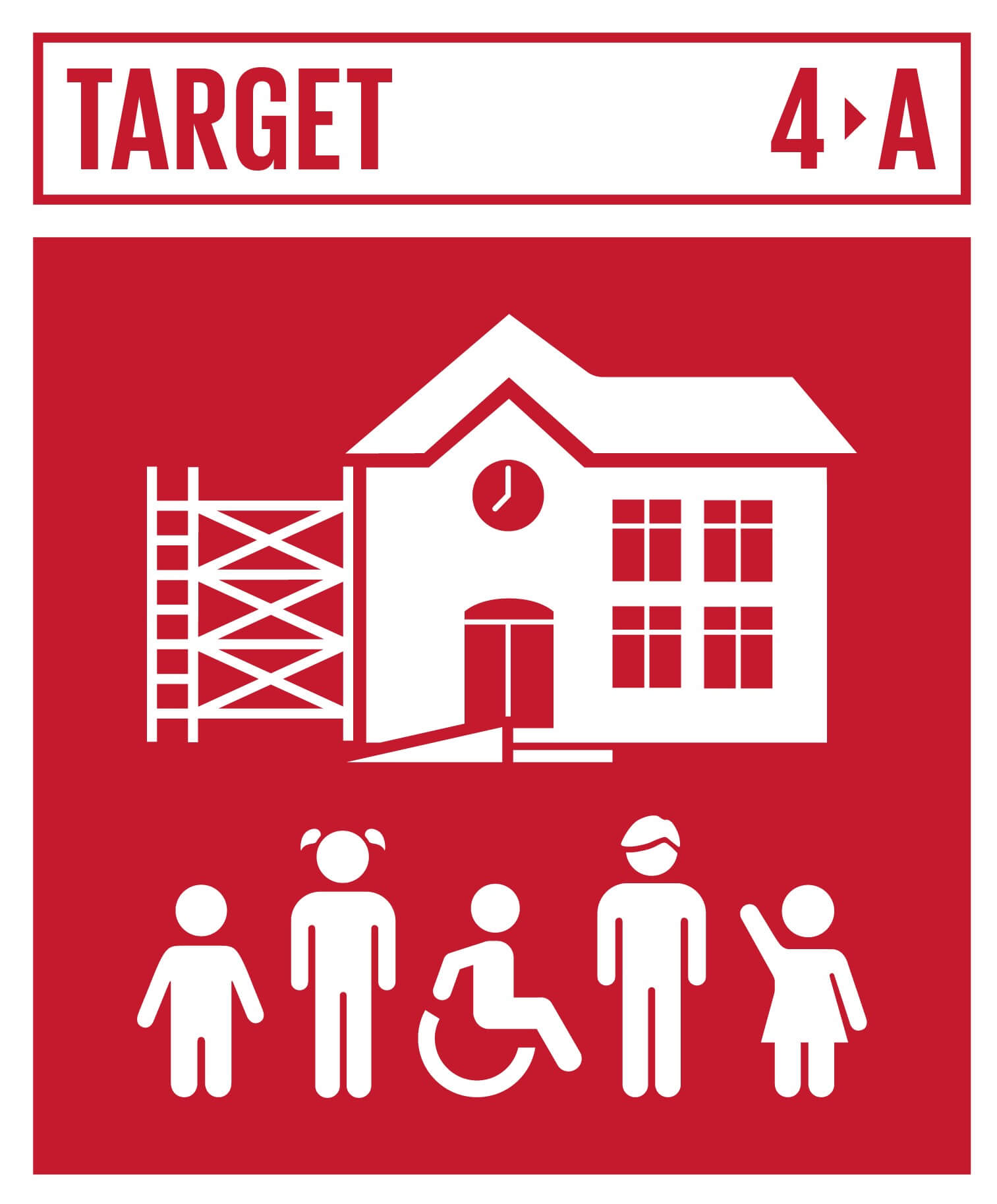 |
Build and Upgrade Inclusive and Safe Schools
Build and upgrade education facilities that are child, disability and gender sensitive and provide safe, non-violent, inclusive and effective learning environments for all.
|
Indicator 4.A.1 | Proportion of schools offering basic services, by type of service
|
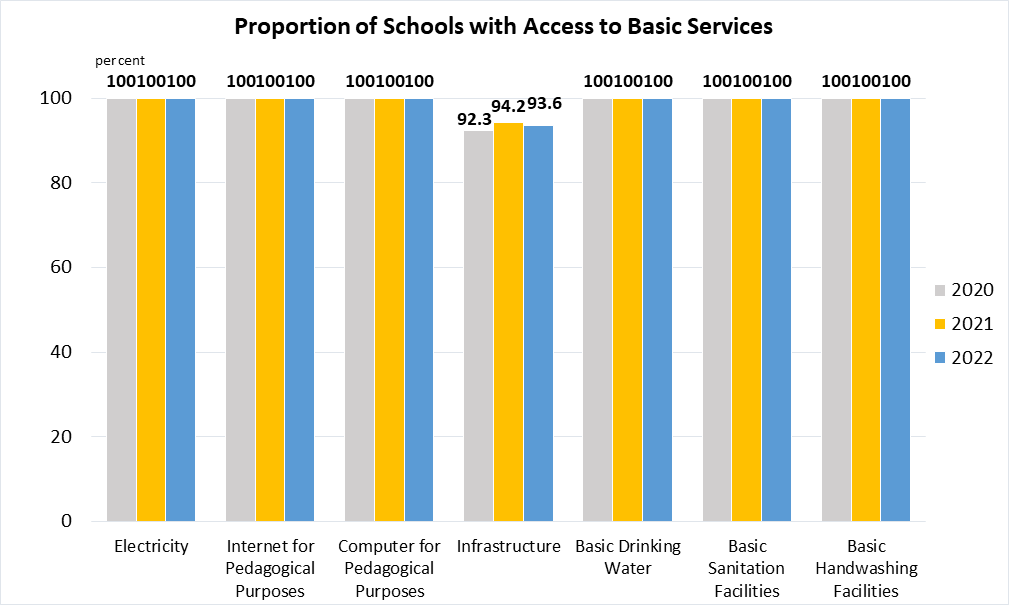
Data refer to primary and secondary levels.
|
 |
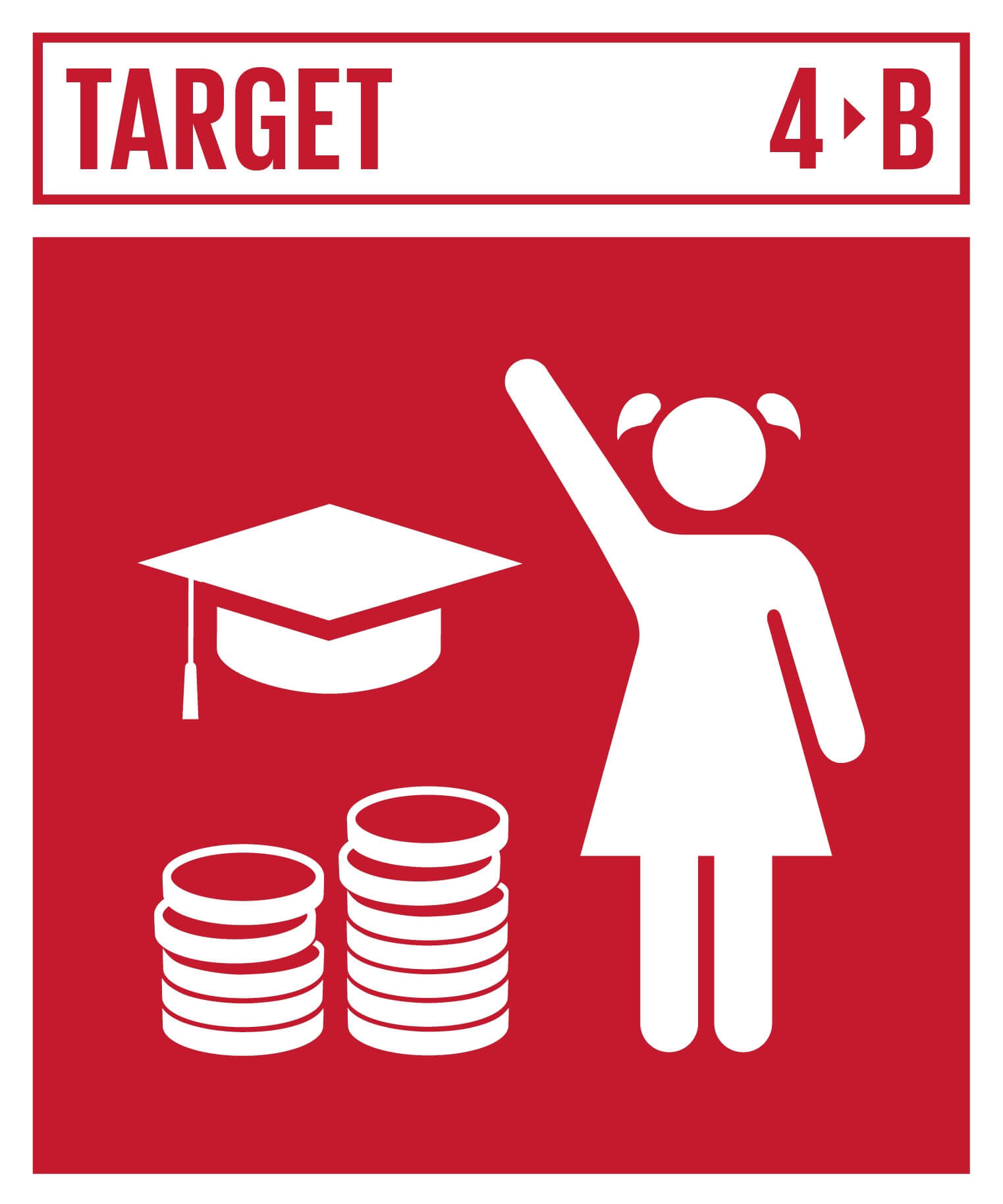 |
Expand Higher Education Scholarships for Developing Countries
By 2020, substantially expand globally the number of scholarships available to developing countries, in particular least developed countries, small island developing States and African countries, for enrolment in higher education, including vocational training and information and communications technology, technical, engineering and scientific programmes, in developed countries and other developing countries.
|
Indicator 4.B.1 | Volume of official development assistance flows for scholarships by sector and type of study
|
Not applicable. Singapore is a developing country and does not provide official development assistance.
|
|
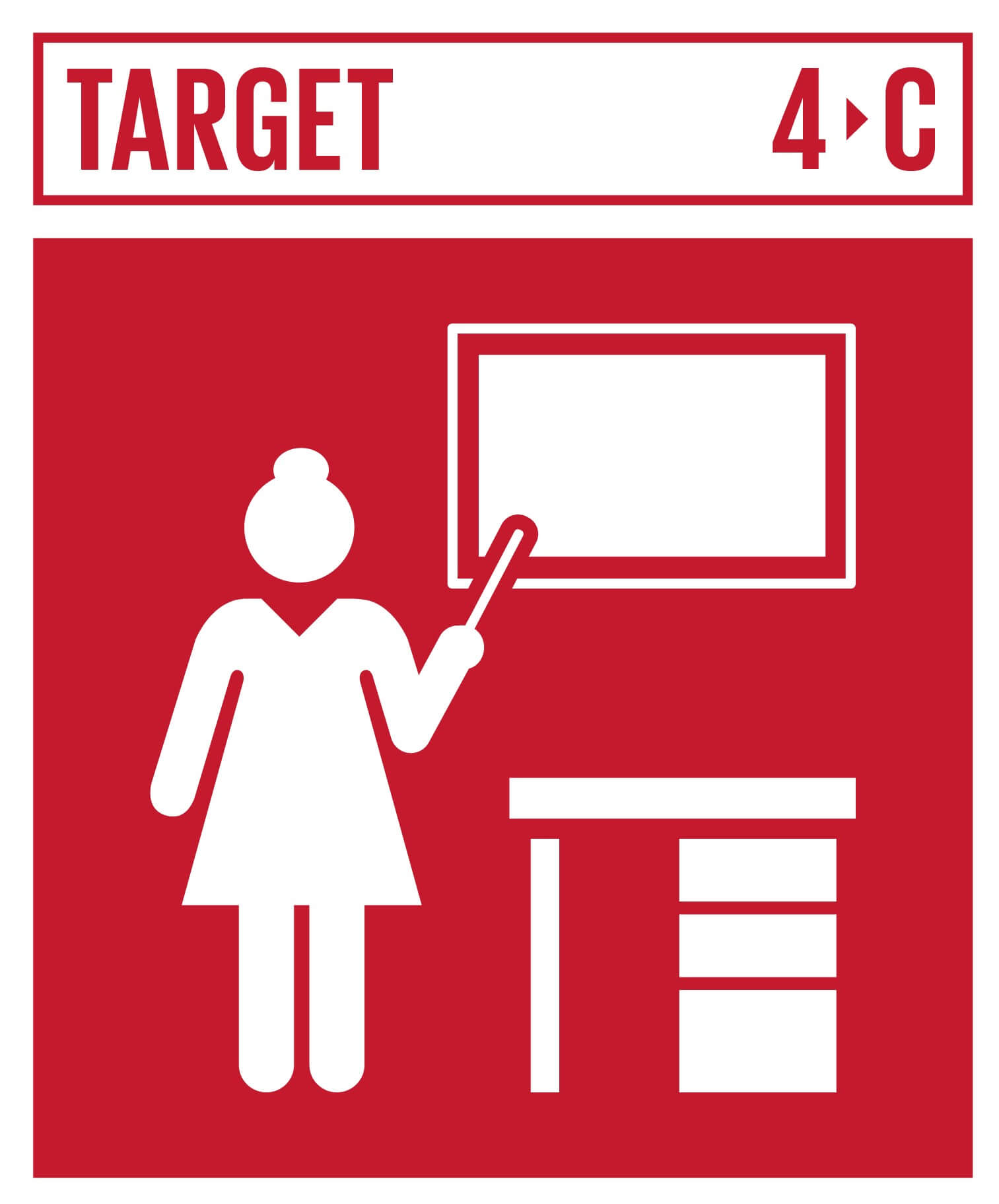 |
Increase the Supply of Qualified Teachers in Developing Countries
By 2030, substantially increase the supply of qualified teachers, including through international cooperation for teacher training in developing countries, especially least developed countries and small island developing States.
|
Indicator 4.C.1 | Proportion of teachers with the minimum required qualifications, by education level
|
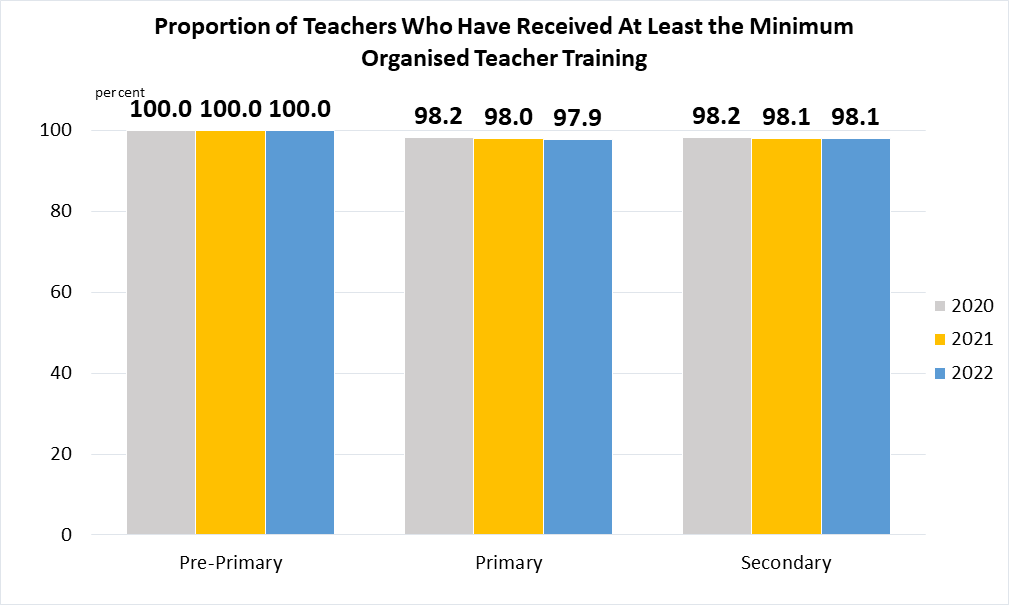
Data refer to trained teachers in Singapore.
Singapore does not disaggregate the secondary school teacher data by lower secondary and upper secondary levels as teachers could teach both levels.
|
 |